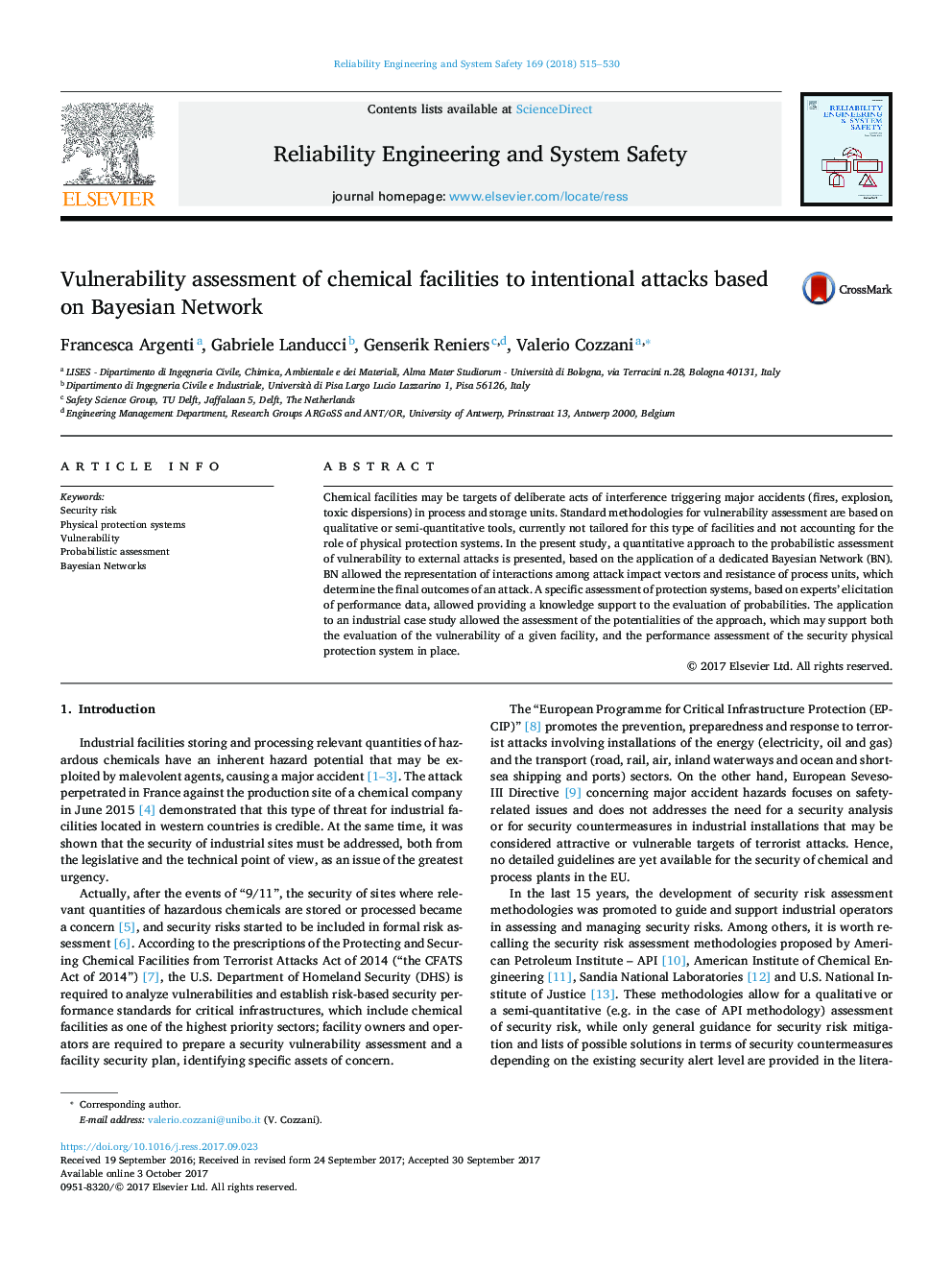| Article ID | Journal | Published Year | Pages | File Type |
|---|---|---|---|---|
| 5019294 | Reliability Engineering & System Safety | 2018 | 16 Pages |
â¢Vulnerability assessment of chemical facilities subjected to external attacks was addressed.â¢A method for quantitative vulnerability assessment was developed.â¢The method was based on Bayesian Networks (BN).â¢BN accounts for physical security system effectiveness based on experts' judgment.â¢BN relies on fragility models for the evaluation of equipment failure probability.
Chemical facilities may be targets of deliberate acts of interference triggering major accidents (fires, explosion, toxic dispersions) in process and storage units. Standard methodologies for vulnerability assessment are based on qualitative or semi-quantitative tools, currently not tailored for this type of facilities and not accounting for the role of physical protection systems. In the present study, a quantitative approach to the probabilistic assessment of vulnerability to external attacks is presented, based on the application of a dedicated Bayesian Network (BN). BN allowed the representation of interactions among attack impact vectors and resistance of process units, which determine the final outcomes of an attack. A specific assessment of protection systems, based on experts' elicitation of performance data, allowed providing a knowledge support to the evaluation of probabilities. The application to an industrial case study allowed the assessment of the potentialities of the approach, which may support both the evaluation of the vulnerability of a given facility, and the performance assessment of the security physical protection system in place.
